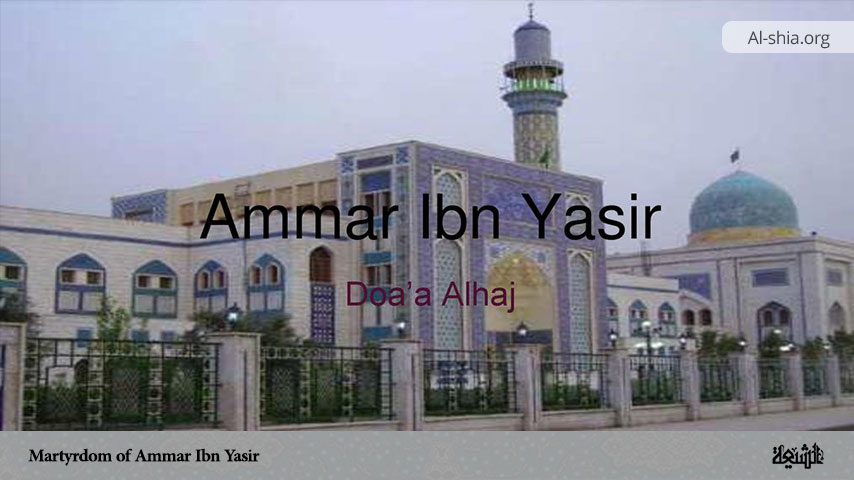In continuation of the discussions on the concept of Mahdi in Shia Islam, we shall focus on other relevant areas of the topic here.
Among the first Shi’ite compilers of traditions concerning the number of Imams, the twelfth Imam, his two occultations, and his final Return and Rise, let us cite: Shaykh al-Kulayni, who died in 329 AH/940 AD, the same year as the beginning of the major Occultation, and who compiled his Usul min al-Kafi during the period of the minor Occultation; al-Nu’mani Ibn Abi Zaynab (d.circa 345 or 360 AH/956 or 971 AD); Ja’far al-Qummi (d.369 AH/979 AD); Ali ibn Muhammad al-Khazzaz al-Razi al-Qummi (d. in the second half of the fourth AH/tenth AD century); Ibn Bâbuye (d. 381 AH/991 AD) who, especially in his Kamal(Ikmal) al-din, seems to have collected the essentials of all the information from his predecessors; Ahmad ibn Muhammad Ibn ‘Ayyash al-Jawhari (d.401 AH/1101 AD; Al-Shaykh al-Mufid (d. 413 AH/1022 AD), author of Kitab al-Irshad; id. Al-Fusul al-‘ashara fi al-ghayba; Al-Murtada ‘Alam al-Huda (d. 436 AH/1044 AD), a disciple of al-Mufid; Ali al-Karajaki (d. 449 AH/1057 AD), another of al-Mufid’s disciples; and finally Muhammad ibn Al-Hasan al-Tusi (d.460 AH/1067 AD). All these authors’ works preceded the minor Occultation. (1)
The Twelver Shi’ite doctrine on the Occultation, based on traditions attributed to the Imams, was authoritatively elaborated by Muhammad ibn Ibrahim al-Nu’mani in his Kitab al-Ghayba, by Ibn Babuya in his Ikmal al-Din, and by Shaykh al-Tusi in his Kitab al-Ghayba. In Imami traditions, as in Sunni traditions, the Mahdi will rule the world, with Jesus praying behind him after his descent from heaven. This did not raise a theological problem as it would in Sunnism, since the Mahdi, like all other Imams, according to prevalent Imami doctrine, exceeds all Prophets except Muhammad in religious rank. (2)
B) The Occultation
The Occultation (ghayba) is a period of concealment chosen by God for the Imam who will continue to live in this state as long as God deems it necessary. Then He will command him to reappear and take control of the world in order to restore justice and equity. The mysterious fate of the son of the eleventh Imam divided the early Shi’ite family into some eleven to fifteen different schisms. (3) But the idea according to which the twelfth Imam was alive and hidden and would return at the End of Time, was later adopted by all Imamites due to the tenacious efforts of authors/compilers like al-Kulayni, al-Nu’mani and especially Ibn Babuye, who, through the great mass of traditions surrounding this belief, progressively managed to convince the population of the faithful. (4)
In fact, early Imamites attempted to present the Imamate and Mahdi-ism of the Twelfth Imam in occultation in a logical and rational way. (5) According to Imamite sources, Muhammad ibn Al-Hasan al-‘Askari (al-Mahdi) had his first occultation when he was a child, in 260 AH/874 AD, at the time of his father’s death, and it lasted nearly 70 years. At Samarra in Iraq, beside the shrines of the tenth and eleventh Imams, is a mosque under which there is a cave from where Imam Mahdi is said to have disappeared (6) when he was five years old.
This cave was a place of retreat and meditation for the eleventh Imam and his son, and also a hiding place from the Abbasid agents. (7) During this Occultation, the Imam communicated with his faithful via four successive Representatives (nâ’ib):
- Abu ‘Amr ‘Uthman ibn Sa’id al-‘Umari (or al-‘Amri), a representative from 260 AH/874 AD to 267 AH/880 AD.
- Abu Ja’far Muhammad ibn ‘Uthman al-‘Umari (or al-‘Amri), the son of the above, from 267 AH/880 AD until 305 AH/917 AD.
- Abul-Qasim al-Husayn ibn Rawh al-Nawbakhti, from 305 AH/917 AD to 326 AH/937 AD.
- Abul-Hasan Ali ibn Muhammad al-Simarri, from 326 AH/937 AD to 329AH/941 AD.
This was “the minor Occultation” (al-ghayba al-sughra). Then, around 329 AH/941 AD, came the beginning of “the major Occultation” (al-ghayba al-kubra) after the fourth representative received a last autographed note from the hidden Imam: “In the name of God, the Compassionate, the Merciful; Ali ibn Muhammad al-Simarri, may God increase, through you, the reward of your brothers [in religion; that is the Shi’ites]; your death will take place in six days. Prepare yourself and name no one as your successor [as a representative] after your death.
This is the advent of the second Occultation in which there will be no more manifestation, except if it be with divine permission, and that will only take place after a long time, when hearts will be hardened and the earth filled with violence. Among my partisans, some will claim to have seen me with their eyes. Beware! He who claims to have seen [me] with his eyes before the raising of al-Sufyani and [the sounding of] the Cry is a liar and an impostor. Greatness and Power belong to God alone.”
Six days later al-Simarri, on his deathbed, was asked, “Who will be your successor?” He replied, “From this point on, the matter is in God’s hands, He will arrange it Himself.” Those were his last words. (8) The major Occultation is still in effect, and will not end until the End of Time (akhir al-zaman) when the Mahdi comes back to re-establish Justice on earth. The Imam is not completely cut off from his followers but has spokesmen, in the form of learned jurists (Marja Taqlid), who can act on his behalf and guide the Shi’ites in their religious matters. Imamite traditions give four reasons for the Occultation:(9)
- Safeguarding the life of the twelfth Imam.
- Independence vis-à-vis temporal powers; through his Occultation, the Mahdi will owe allegiance to no temporal powers.
- Putting the Imamites to the test; the Occultation serves as a long period of trial, a challenge to their faith.
- Finally, there is a hidden reason for the Occultation, which is said to be the most important of all, although it will not be revealed until the Return of the Mahdi.
With the major Occultation, the secret life of the Twelfth Imam begins, whose occult presence has dominated the Shi’ite religious consciousness for more than ten centuries. The Twelver tradition illustrates this from as early as the fourth AH/tenth AD century, the hidden Imam living in his physical body, providentially endowed with a long life. To support this claim, Ibn Babuye dedicates six chapters of his Kamal al-din to those known for their extraordinarily long lives in the Arabic tradition.
It is also said in the Twelver tradition that the hidden Imam attends the annual pilgrimage to Mecca and that he sees people even if they cannot see him. (10) He is visibly present and walks through their marketplaces and into their homes, and nobody recognizes him. (11) In this latter case, he is compared to Joseph,(12) seen but not recognized by his brothers. As in Joseph’s case, God can allow him to be recognized by some people. The Prophet is said to have stated: “…His faithful are illuminated by his Light; they profit from his wilaya during his Occultation, just as one profits from the sun even when it is covered by clouds.”(13) The history of the twelfth Imam during his major Occultation is constituted of stories and narratives recounted by those who saw the Mahdi in their dreams or in reality. (14)
The compilations of al-Kulayni, al-Nu’mani, and Ibn Babuye, to name the oldest and the best known, and numerous other Shi’ite works throughout the centuries, contain a number of eyewitness accounts from even ordinary people who were in great distress or other unfortunate circumstances and who claim having met the twelfth Imam. “None of these mysterious appearances to his faithful suspends his Occultation but each of these appearances suspends for his faithful the common laws of time and space for Men who do not perceive the occult presence of the Imam.”(15)
Continue in the next article: ( Mahdi in Shi’ism 3 )
NOTES:
___________________________________________________
1. M.A.A. Moezzi, The Divine Guide in Early Shi’ism, p.101
2. “Al-Mahdi”, EI², p. 1236
3. Cf. A.A. Sachedina, Islamic Messianism, pp. 42-55, see also an-Nawbakhti, les sectes shiites (Kitab Firaq al-shi’a), pp.109.
4. M.A.A.Moezzi, The Divine Guide in Early Shi’ism, p.105.
5. Sachedina, “A treatise on the Occultation…”, p.111.
6. M. Momen, An Introduction to Shi’i Islam, P.161.
7. H. Corbin, En Islam Iranien, vol.4, p. 322.
8. Ibn Babuye, Kamal al-din, vol. 2, ch. 45, p.516, num.44.
9. Al-Kulayni, Usul, Kitab al-Hujja, bab nadir fi hal al-ghayba, vol. 1 pp. 333-335, bab fi l-ghayba, vol. 2 pp. 132- 45. Ibn Babuye, Kamal al-din, vol. 2 , ch. 44 , PP .479 – 82, num 1, 2, 6, 8.
10. Ibn Babuye, Kamal al-din, Bab Dhikr man shahada al-Qa’im wa raâhu 43, vol.2, pp.351, num.8.
11. Ibn Babuye, Kamal al-dîn , vol. 2, ch.33, p.341, num.21. also, al-Kulayni, Usul, Kitab al-Hujja, bab Nahi ‘an al- Ism, vol.1, num 1 & 3 , p. 332-333 ; Al-Nu’mani, Kitab al-ghayba, p.257.
12. The Holy Qur’an, surah 12 (Yusuf).
13. Ibn Babuye, Kamal al-dîn, vol.2, ch.43, p.253, num.3.
14. H. Corbin, En Islam Iranien, vol.4, p. 304.
15. Ibid, p.306.


















